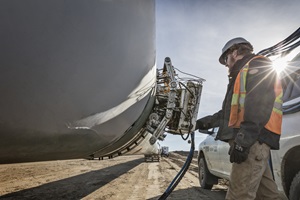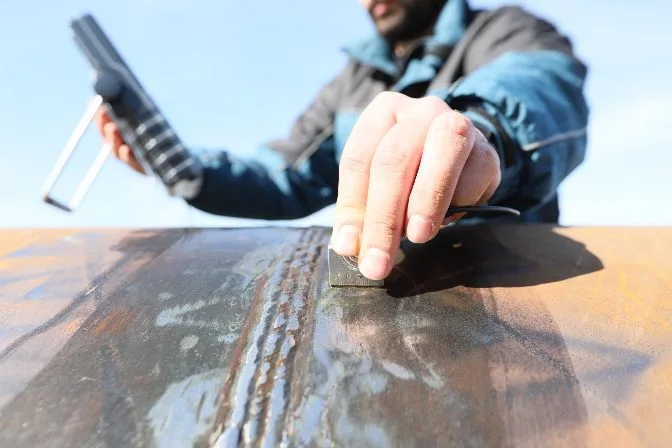Recognizing the Fundamentals of Pipe Welding Inspection: Vital Aspects for Evaluating Weld Quality and Preventing Failures
In the world of pipe welding evaluation, the risks are without a doubt high, necessitating a thorough understanding of basic principles to make certain weld high quality and mitigate failing risks. Different crucial variables come into play, consisting of the choice of ideal materials, the application of innovative evaluation strategies, and the recognition of widespread welding problems.
Relevance of Weld Quality
The honesty of a pipeline is essentially dependent on the high quality of its welds, making weld top quality a vital consider guaranteeing secure and efficient operation. A pipeline weld acts as a joint factor where materials are joined, and any kind of deficiencies in this field can cause significant structural weak points. Poor bonded quality can lead to leakages, tears, and devastating failures, posturing serious security dangers and ecological risks.
Several aspects add to the top quality of a weld, including the choice of welding process, the abilities of the welder, and the problems under which the welding is executed - Pipeline Welding Inspection. Inadequate preparation, incorrect warm input, and contamination can jeopardize weld honesty, bring about issues such as porosity, incomplete blend, or splits. Consequently, rigorous top quality control measures have to be executed throughout the welding process to alleviate these risks
Furthermore, the lasting efficiency of a pipe is greatly affected by the longevity of its welds. High-quality welds not only improve the overall toughness of the pipe but also extend its life span, reducing the requirement for costly repairs and downtime. Therefore, making certain exceptional weld high quality is paramount in pipeline style and maintenance methods.
Secret Examination Methods
Guaranteeing weld quality necessitates the application of effective assessment strategies to recognize potential defects prior to they lead to failings. Pipeline Welding Inspection. Amongst one of the most commonly utilized techniques are visual examination, radiographic screening (RT), ultrasonic testing (UT), and magnetic fragment screening (MT) Each method offers an unique purpose and is chosen based on the specific demands of the pipe task
Aesthetic evaluation is the very first line of protection, allowing examiners to analyze surface conditions, positioning, and overall workmanship. Radiographic screening provides an in-depth sight of inner weld integrity by using X-rays or gamma rays to find subsurface flaws.
Ultrasonic testing utilizes high-frequency audio waves to review the density and integrity of welds, making it optimal for identifying inner gaps. Magnetic bit screening is a trusted method for identifying surface and near-surface problems on ferromagnetic materials by applying electromagnetic fields and fine ferrous bits. By using these crucial examination strategies, pipe welding assessors can make certain the finest requirements are kept, inevitably causing more secure and a lot more trusted pipe systems.
Usual Welding Flaws
In the world of pipeline welding, comprehending common welding defects is essential for maintaining structural honesty and security. These defects can result in devastating failures otherwise determined and attended to quickly. Among one of the most prevalent flaws are porosity, which occurs when gas allures in the weld metal, developing spaces that weaken the joint. One more significant concern is lack of combination, where the weld metal does not properly bond with the base product, jeopardizing the joint's toughness.

Splits are likewise a crucial problem, manifesting in numerous forms such as warm cracks, chilly fractures, and origin fractures. Each kind positions one-of-a-kind difficulties and calls for particular examination techniques for discovery. Undercut is an additional problem that can lower the weld's cross-sectional area, causing stress focus factors, while slag inclusion happens when non-metallic product becomes caught in the weld swimming pool, adversely impacting the mechanical buildings of the weld.
In addition, incorrect bead form can result in unequal stress and anxiety circulation. Identifying these typical flaws is crucial for welders and inspectors alike, as early detection and correction are vital to ensuring the longevity and reliability of pipe systems.

Products and Their Impact
Picking the suitable products for pipeline welding significantly affects the overall efficiency and reliability of the bonded joints. The choice of base metals, filler products, and finishings plays an essential duty in determining the toughness, corrosion resistance, and toughness of the welds. For instance, carbon steel is frequently used for its balance of toughness and cost, however it might be at risk to rust in particular environments, requiring using corrosion-resistant alloys or protective layers.
Furthermore, dissimilar metal welding requires mindful consideration of thermal expansion residential or commercial properties and prospective galvanic corrosion. The compatibility of materials can substantially influence the microstructure of the weld, causing variants in mechanical homes. As an example, stainless-steel uses superb corrosion resistance however might require particular filler materials to make sure an audio weld joint.
Additionally, the impact of temperature level and ecological problems on product choice can not be undervalued. High-strength steels might lose ductility at raised temperatures, while low-temperature applications may call for products with boosted toughness. Inevitably, comprehending the implications of product options is crucial for achieving ideal weld quality and protecting against failings in pipe systems.

Governing Requirements and Compliance
Governing standards and compliance play a pivotal duty in pipe welding, developing the structure within which reliable and risk-free methods are preserved. These criteria are created by various companies, consisting of the American Society of Mechanical Designers (ASME), the American Welding Culture (AWS), and the Pipeline and Hazardous blog Products Safety Management (PHMSA) Sticking to these policies ensures that welding treatments fulfill the called for high quality and safety criteria.
Compliance with governing standards is essential not just for making sure the stability of the welds yet likewise for securing the setting and public safety. Assessors are entrusted with confirming that welding procedures abide by these criteria through strenuous evaluations of both the procedures and the last welds. This involves reviewing welder qualifications, welding procedures, and the materials used.
Failure to follow recognized regulations can cause substantial effects, consisting of expensive repair work, legal liabilities, and devastating failures. As a result, companies need to integrate compliance into their operational methods, promoting a society of safety and top quality. Regular training and audits are crucial parts in keeping adherence resource to these regulative standards, making certain that all workers are well-informed and furnished to copyright the greatest levels of pipeline welding top quality.
Final Thought
In conclusion, a thorough understanding of pipeline welding examination is vital for guaranteeing weld quality and protecting against failings. By using crucial assessment techniques and acknowledging typical welding issues, assessors can efficiently examine the stability of welds.
In the realm of pipeline welding evaluation, the stakes are without a doubt high, requiring a complete understanding of basic principles to make sure weld high quality and minimize failing dangers (Pipeline Welding Inspection).The honesty of a pipe is fundamentally reliant on the quality of its welds, making weld high quality a crucial aspect in ensuring secure and effective procedure.A number of factors contribute to the top quality of a weld, consisting of the choice of welding process, the skills of the welder, and the problems under which the welding is carried out. Undercut is another issue that can decrease the weld's cross-sectional location, leading to stress concentration points, while slag inclusion occurs when non-metallic product comes to be entraped in the weld swimming pool, detrimentally affecting the mechanical properties of the weld
In conclusion, an extensive understanding of pipeline welding assessment is essential for guaranteeing check over here weld high quality and stopping failures.
Comments on “Pipeline Welding Inspection: Critical Actions for Reliable Pipeline Construction”